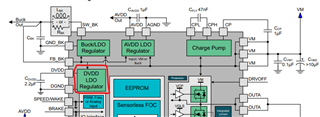Tool/software:
Dear Texas Instruments Support Team,
I hope this message finds you well.
I am currently working on a project involving the MCF8316C-Q1 motor driver, which is implemented on a PCB designed by one of our clients. I am experiencing difficulties establishing communication with the device in order to read and overwrite some incorrectly programmed registers.
I am using LabVIEW in conjunction with a USB-8452 SPI interface, but so far I have been unable to successfully read from or write to the MCF8316. I suspect I may be missing a required step or configuration, but after several attempts, communication has not been established.
Could you please provide some guidance or recommendations for interfacing with the MCF8316C-Q1 via the USB-8452? Any documentation, reference code, or configuration tips would be greatly appreciated.
Thank you very much for your time and support.



